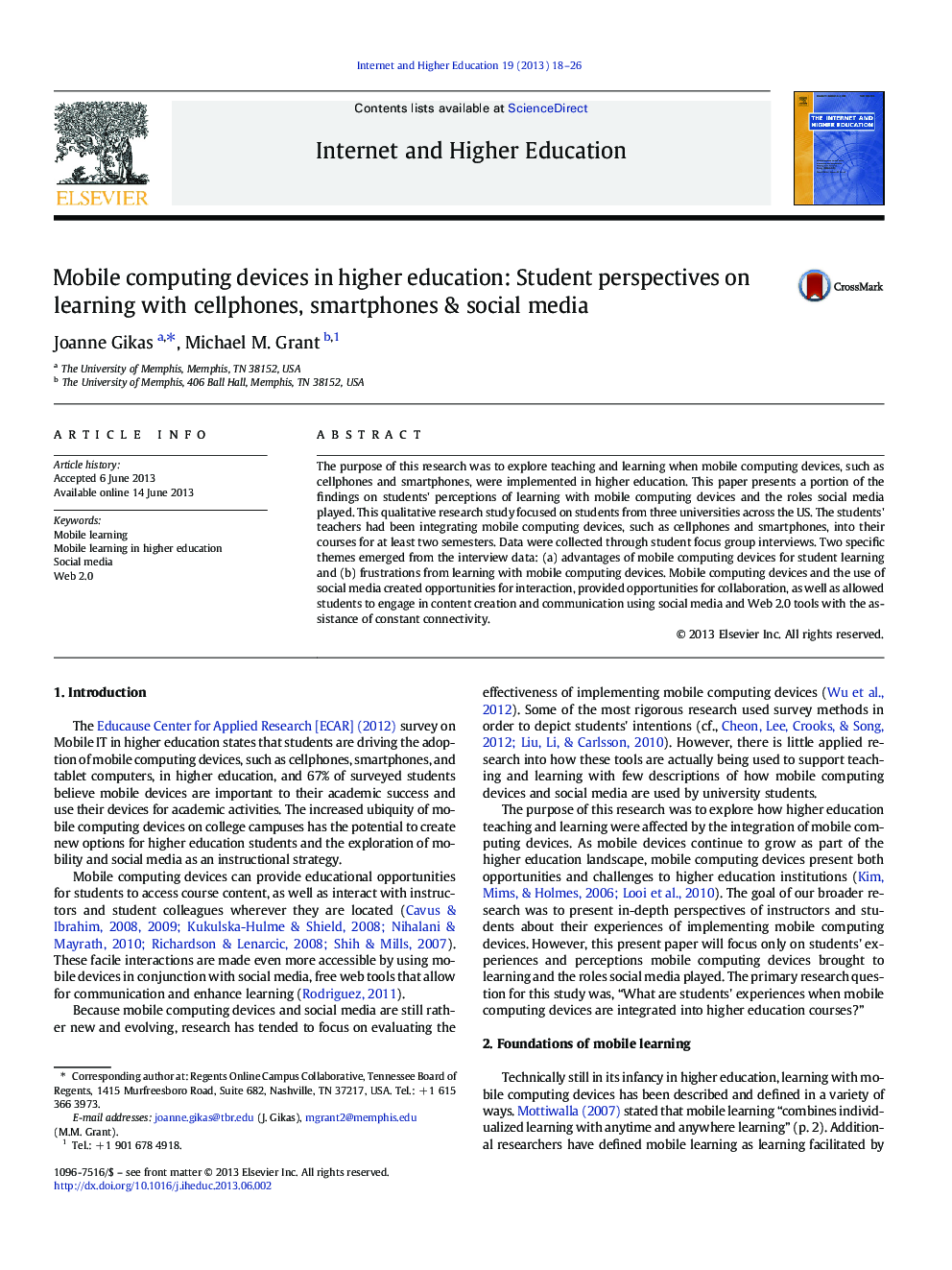| کد مقاله | کد نشریه | سال انتشار | مقاله انگلیسی | نسخه تمام متن |
|---|---|---|---|---|
| 357763 | 619949 | 2013 | 9 صفحه PDF | دانلود رایگان |
• Mobile devices offer a variety of ways to learn, communicate and collaborate.
• Frustrations arise when there is a lack of institutional support or training.
• Students "blur the lines" between social networking tools and mobile devices.
The purpose of this research was to explore teaching and learning when mobile computing devices, such as cellphones and smartphones, were implemented in higher education. This paper presents a portion of the findings on students' perceptions of learning with mobile computing devices and the roles social media played. This qualitative research study focused on students from three universities across the US. The students' teachers had been integrating mobile computing devices, such as cellphones and smartphones, into their courses for at least two semesters. Data were collected through student focus group interviews. Two specific themes emerged from the interview data: (a) advantages of mobile computing devices for student learning and (b) frustrations from learning with mobile computing devices. Mobile computing devices and the use of social media created opportunities for interaction, provided opportunities for collaboration, as well as allowed students to engage in content creation and communication using social media and Web 2.0 tools with the assistance of constant connectivity.
Journal: The Internet and Higher Education - Volume 19, October 2013, Pages 18–26
